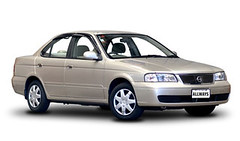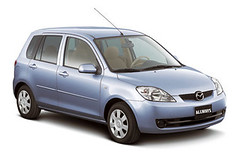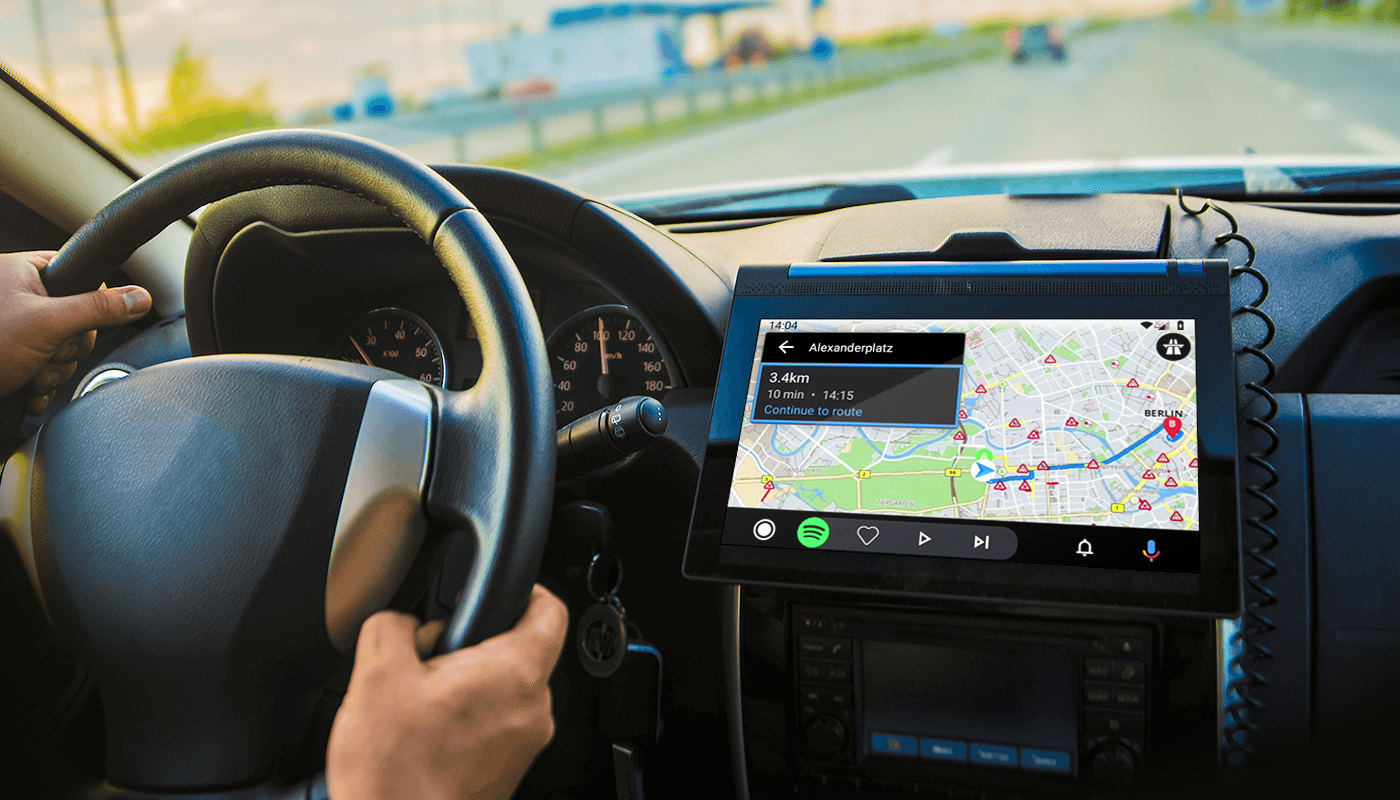
Car rental prices have seen their share of turbulence in recent years, hitting unprecedented sky-high levels in July 2021. While there’s good news that prices seem to have peaked and are beginning a descent, we’re still far from the pre-COVID rates many of us remember. Inflation has impacted nearly every sector of the economy, yet it has struck car rental prices with even greater force. Looking at summer 2024, average prices across all items were up around 23% since before the pandemic, but rental car prices are a much sharper 29% higher. This financial reality can quickly eat into your vacation budget.
But here’s the empowering truth: you don’t have to resign yourself to spending an exorbitant amount on your next rental. With a bit of strategic planning and a few savvy tricks, you can significantly cut costs and ensure your road trip, whether it’s a quick weekend escape or a grand cross-country adventure, remains budget-friendly. This guide is packed with actionable advice to help you navigate the rental landscape and lock in the best possible price.
We’re diving deep into practical, expert-backed tips that will empower you to save money before you even pick up the keys. From where you rent to how you book and what you say ‘no’ to, every decision can impact your final bill. Let’s unlock these secrets and make your next car rental experience both affordable and stress-free.

1. Skip the Airport Rental Counter
The convenience of grabbing your rental car right after your flight lands is undeniable, especially when you’re touching down in an unfamiliar city. However, this ease often comes with a hefty price tag. Rental locations at airports frequently include a premium due to high demand and a variety of additional costs known as airport surcharges. These can manifest as fixed dollar figures, such as a “Customer Facility Charge,” or as a percentage of your overall rental amount, sometimes even both.
These charges aren’t trivial; they typically add several dollars per day to your rental cost, potentially accumulating into a significant three-figure sum depending on the duration of your trip. The financial impact of these fees was highlighted in a June 2024 NerdWallet study. This analysis compared seven-night rental prices from airport outposts against those from nearby downtown counterparts for major car rental companies in cities hosting America’s 15 largest airports.
The study’s findings were eye-opening: seven-night car rentals from downtown locations were, on average, $86 cheaper than those picked up at airports. This translates to an average of an 18.4% increase in cost when you choose the airport over a downtown rental. The takeaway is clear: convenience at the airport often costs you more, sometimes substantially.
To leverage this saving, begin by pricing out rental locations within the city and directly comparing them to airport rates. Remember to factor in the cost and time of a taxi or rideshare service to transport you to and from your chosen rental location away from the airport. Even with these additional transport costs, you’ll often find yourself coming out ahead. If your flight arrives late in the evening, an even smarter move might be to take a cab or rideshare directly to your hotel, picking up your rental car the following morning. This way, you avoid paying a full day’s rental fee for a vehicle you’d only use for a short hop from the airport to your accommodation. As Tania Clasen, vice president of strategic alliances and partnerships for Hertz, advises, “If travelers need to book last-minute and have flexibility, they may find better rental availability outside high-volume areas.”
Read more about: Outsmarting the Crooks: A Tourist’s Guide to Europe’s 14 Most Common Travel Scams

2. Shop Smart Online & Compare Widely
In the digital age, one of the most powerful tools in your car rental savings arsenal is the internet. Begin your search by utilizing popular online travel agencies and comparison sites such as Kayak, Priceline, and Cheapcarrental.com. These platforms allow you to quickly compare a multitude of options and pinpoint potential deals from various rental providers, helping you narrow down your choices efficiently. They provide a broad overview, which is excellent for an initial assessment of the market.
However, don’t stop there. After identifying promising rates on comparison sites, always take the crucial next step: visit the car rental company’s direct website. You might be surprised to discover even steeper discounts available exclusively through their own portals, particularly with “Pay Now” or prepaid options. These advance payment deals often unlock the best rates the company offers. Just be mindful of a key caveat: rentals paid in advance are typically nonrefundable, so ensure your plans are firm before committing.
The savvy shopper’s journey doesn’t necessarily end after booking, especially if you opted for a refundable reservation. Car rental prices are dynamic and can fluctuate significantly, sometimes even after you’ve secured a vehicle. If you didn’t choose a nonrefundable rental, make it a habit to keep shopping around. If a better price emerges, you can simply cancel your existing reservation and rebook at the lower rate, ensuring you always get the optimal deal.
For an even more advanced approach to online savings, consider using AutoSlash. This free website takes the legwork out of comparison shopping by searching for rates from various companies and automatically applying eligible coupon codes and membership discounts, such as those from AAA. What truly sets AutoSlash apart is its innovative rate-tracking feature: once you’ve booked a rental, you can have AutoSlash monitor prices and notify you if the rate drops. This empowers you to cancel your original booking and rebook at the new, lower price, maximizing your savings effortlessly. While incredibly useful, remember that AutoSlash typically cannot search for corporate or university-specific codes, so it’s always wise to cross-reference with those potential discounts manually.
Read more about: Remember These? 14 Classic Film & Video Formats That Faded into History

3. Don’t Assume Discount Brands are Cheapest
It’s a common misconception that rental companies with names like “Dollar” or “Budget” automatically offer the lowest prices. While their branding might suggest deep discounts, this isn’t always the reality in the competitive car rental market. Many travelers make the mistake of gravitating towards these brands, assuming they’ll inherently save money, only to find that other, more established companies can offer better deals.
A comprehensive 2024 rental car study conducted by NerdWallet shed light on this very issue, revealing that some of the traditionally “big-name” rental companies actually ranked among the most affordable options. Specifically, the study found that Thrifty, Hertz, and Enterprise Rent-A-Car were often among the cheapest providers. In a stark comparison from the study, the average price for a seven-night rental from National, identified as the most expensive brand, was $601, whereas the same rental could be secured for just $414 with Thrifty.
This data underscores a critical point: it’s imperative to conduct your own thorough comparison shopping without preconceived notions about which brands will offer the best rates. Do not automatically assume that companies like Advantage, Payless, or Dollar Rental will provide a lower rate than their larger, often perceived as more premium, counterparts. The market is too dynamic, and pricing strategies vary widely.
To truly get the best deal, you must cast a wide net across all available brands, regardless of their perceived market position. Include everyone from the “discount” labels to the major players in your price comparisons. You might be surprised to find that a premium brand, perhaps running a special promotion or offering a “Pay Now” discount, can significantly undercut a company you assumed would be cheaper. Always verify with current quotes, rather than relying on brand names, to ensure you’re securing the most competitive price for your next trip.
Read more about: You Won’t Believe How These 13 Famous People Live Surprisingly Frugal Lives—From Billionaires to Hollywood Stars!

4. Leverage Memberships & Corporate Codes
One of the most powerful yet often overlooked strategies for reducing car rental costs is to leverage any memberships or corporate affiliations you hold. Organizations and employers frequently negotiate special rates, discounts, and perks with rental car companies, and these can translate into substantial savings for you. Whether it’s a warehouse club, an automotive association, a credit card rewards program, or your workplace, these connections are veritable goldmines for cheaper rentals.
Take, for instance, a Costco membership. Clem Bason, CEO of goSEEK.com and formerly of Hotwire.com, enthusiastically states, “I find that Costco consistently beats full-price car rentals on online travel agencies.” Beyond just competitive pricing, a significant added bonus of booking through Costco is that you can often add an additional driver to your rental for free, a perk that typically incurs daily fees with other booking methods.
AAA memberships are another fantastic money-saving tool. They provide members with valuable discounts for Hertz rentals, often as much as 20% off base rates. Furthermore, AAA members aged 20 to 24 can benefit from waived underage driver fees when booking with Hertz through the AAA partnership, which is a significant saving for younger renters. Additional AAA-Hertz benefits include discounts on prepaid fuel and a complimentary car seat or booster seat for an infant or child. Similarly, USAA members are eligible for discounted rentals of up to 35% with a range of companies including Alamo, Avis, Budget, Enterprise, Hertz, and National when booking through the USAA portal. It’s worth noting that USAA membership is open to current and former military personnel, as well as their spouses and children.
Don’t forget the power of corporate, university, or alumni codes. Many employers, especially larger companies, have negotiated corporate discount codes that can be used for both business and sometimes personal travel. Similarly, many universities have deals with major rental companies like Avis, Enterprise, Hertz, and National, offering significant savings to students and alumni. It’s always worth checking with your travel or human resources department for these unadvertised codes. While these codes can offer benefits like free additional drivers or waived fees for younger drivers, always ensure you are eligible to use them for personal rentals, as some are strictly for business use and companies often request proof of affiliation. Using a code you’re not entitled to isn’t worth the risk of being denied the rental or charged a higher rate at the counter.
Read more about: Insider Secrets Revealed: Your Ultimate Lifehacker Guide to Unlocking Maximum Savings at Costco and Sam’s Club

5. Choose Economy Cars (and eye for upgrades)
When your primary goal is to save money on a car rental, opting for an economy or compact car is one of the most straightforward and effective strategies. These smaller vehicles typically come with the lowest daily rental rates, immediately cutting down your upfront costs. Beyond the initial rental price, economy cars are also inherently more fuel-efficient, which translates to additional savings at the gas pump, especially on longer road trips. This dual advantage makes them an excellent choice for the budget-conscious traveler.
However, there’s a clever trick that can potentially enhance this saving strategy even further. Economy cars are often the most popular and, consequently, the most frequently booked category. This high demand can sometimes lead to them being overbooked or unavailable at the time of your pickup. This scenario can be used to your advantage, as noted by Brett Graff, a family finance expert. She suggests, “When renting a car, I reserve the smallest, most affordable vehicle possible, knowing there’s a chance it won’t be on the lot and I’ll get an upgrade.”
If the rental company has run out of economy cars, you stand a good chance of being offered a complimentary upgrade to a larger vehicle at no extra charge. This is a common practice to ensure customer satisfaction and clear the lot. While not a guaranteed outcome, it’s a pleasant possibility that can give you a more comfortable ride for the price of the cheapest option. Just remember, while aiming for an upgrade is smart, don’t book something that is genuinely too small for your party or luggage. You wouldn’t want to be uncomfortably crammed into a two-door coupe with five people and all your bags for your entire vacation.
Some rental companies are also beginning to offer discounts on electric vehicles, which can provide even greater savings on fuel costs, particularly if you have access to charging stations. By consciously choosing the smallest or most fuel-efficient option, you not only secure a lower base rate but also position yourself for potential upgrades and reduced running costs. It’s a win-win strategy for smart renters looking to maximize their value.

6. Stick to One Driver (Aged 25+ for Savings)
One of the quickest ways for car rental costs to escalate is by adding multiple drivers to the rental agreement. Most rental car companies impose a daily fee for each additional driver, which can easily amount to more than $10 per day. Over a week-long trip, this seemingly small fee can add up to a significant sum, making your road trip much more expensive than anticipated. While splitting driving duties might seem appealing for long journeys to combat fatigue, the financial implications need to be carefully considered.
Furthermore, rental companies often levy a specific surcharge for drivers under the age of 25, regardless of their driving record. This “young driver fee” is a common industry practice and can be quite substantial, sometimes adding another $25 or more per day to your rental cost. To avoid these fees, the most straightforward approach is to designate one driver who is at least 25 years old for the entirety of the trip. This simple decision can immediately remove two common cost multipliers from your rental bill.
However, there are legitimate ways to dodge these additional driver fees without violating your rental agreement. Some companies, like Enterprise, will waive the additional driver fee for a spouse or domestic partner, provided both individuals have the same address listed on their driver’s licenses. Others, such as National, extend this courtesy to spouses, partners, and immediate family members if you enroll in their membership program. Leveraging existing memberships can also be a game-changer. Organizations like USAA, AARP, AAA, or warehouse clubs such as Costco often have partnerships with select rental car companies that include a free additional driver perk. For instance, AAA members booking with Hertz can add a second driver for free, and fees for young drivers are also waived through this partnership.
It’s absolutely crucial to remember that letting someone who is not officially listed on the rental agreement drive the car is a serious violation of the terms. If an unauthorized driver gets into an accident, you could find yourself entirely liable for all damages and potentially facing severe financial repercussions, as your insurance or the rental company’s coverage may be invalidated. Therefore, carefully plan who will be driving and ensure they meet the criteria for free addition or budget for the associated fees, making plenty of stops to allow the primary driver to rest.

7.Utilize Your Own Insurance/Credit Card Coverage
When you pick up your rental car, you’ll almost certainly be offered various insurance packages by the rental agent. While these sound reassuring, they are often unnecessary and represent a significant upsell, commonly adding around $30 or more per day to your rental cost. The good news is that you can frequently skip these expensive offerings by leveraging coverage you likely already possess through your personal car insurance or credit card.
For most individuals who own a car, your primary auto insurance policy typically extends to cover you when you rent a car within the United States. For example, Wawanesa states that it provides “the broadest level of coverage you currently have in force for a vehicle on your policy if you’re renting for vacation.” If you’re renting a car because your personal vehicle is in the repair shop, Wawanesa ensures “the same level of coverage for the rental as it does for your car in the shop.” Carless millennials, or younger drivers, might even be added as a driver to their parents’ insurance, often at no extra cost if they have a good driving record, thereby extending coverage to their rentals.
Beyond your personal auto policy, many credit cards offer basic rental car insurance coverage, usually in the form of a Collision Damage Waiver (CDW), if you use that specific card to pay for your rental. This can provide protection against damage to the rental vehicle itself. Some premium travel credit cards, such as the Chase Sapphire Preferred® Card and Chase Sapphire Reserve®, go a step further by offering a *primary* damage waiver. This means if damage occurs, you won’t need to file a claim with your personal car insurance, avoiding potential hefty deductibles or rate increases on your existing policy.
However, it is absolutely essential to read the fine print of both your personal insurance policy and your credit card’s benefits. Understand precisely what is covered, what are the limitations, and what specifically is excluded. For example, many credit card policies exclude exotic vehicles or rentals longer than 31 days. Additionally, if you are renting overseas, you might find that local regulations *require* you to purchase insurance, regardless of your existing coverage. In such cases, it’s vital to factor this into your budget beforehand. A quick call to your insurance provider and credit card company before you travel can save you hundreds of dollars and provide invaluable peace of mind.”
Now that you’ve mastered the immediate savings, let’s look at the bigger picture. Our second section, “Strategic Planning & Long-Term Savings: Beyond the Initial Booking,” dives deeper into how thoughtful planning and clever moves can keep more money in your pocket throughout your rental period and even after you return the car. These next eight tips will empower you with long-term strategies that transform how you approach car rentals, ensuring you’re always getting the absolute best value.

8. Decline Unnecessary Extras (GPS, Satellite Radio, Toll Transponders)
When you arrive at the rental counter, you’ll likely be presented with a range of tempting extras designed to enhance your trip. These might include GPS navigation, satellite radio, roadside assistance, or even prepaid toll transponders. While the rental agents might make these sound indispensable, remember that each add-on comes with its own daily fee, quickly inflating your total cost.
Consider GPS navigation, for example. A dedicated unit can easily add $15 or more per day to your rental. Michael Goldman, president of AutoRentals.com, wisely asks, “Why rent a GPS when you can use Waze or Google Maps on your phone?” Your smartphone is already a powerful navigation device, often offering real-time traffic updates that a standalone GPS might miss. If you’re traveling overseas and concerned about data usage, simply download maps to your phone while connected to Wi-Fi before you set off, or go old-school with a paper map.
Toll transponders are another common upsell. Rental car companies often charge a daily fee for the transponder itself, in addition to the actual tolls you incur. In popular vacation spots like South Florida, AutoRentals.com’s Goldman highlights that “car rental companies often charge $25 per day for the SunPass, whether you use it or not.” A far savvier approach is to purchase your own transponder, such as Florida’s SunPass for $19.99 at local pharmacies and supermarkets, allowing you to pay only for the tolls you actually use without the daily rental fee.
Even car seats, which are often unavoidable for child safety, can be a cost burden at over $10 per day. If you have friends or family at your destination, it’s worth reaching out to see if you can borrow a car seat for the duration of your trip. By thoughtfully reviewing each extra and determining if your smartphone or alternative solutions can fulfill the need, you can sidestep numerous avoidable charges and significantly reduce your rental bill.

9. Pre-fill the Gas Tank Before Return
One of the most frequent mistakes renters make is returning their vehicle with an empty or near-empty gas tank, only to be hit with exorbitant refueling charges. Rental car companies charge a premium if they have to refuel the car for you, often at rates two to four times higher than what you’d pay at a local gas station. This seemingly minor oversight can swiftly add a substantial, unnecessary cost to your final bill.
The best strategy is to build in enough time during your return journey to find a gas station near the rental drop-off location and fill the tank yourself. Apps like GasBuddy are invaluable tools for this, allowing you to scout nearby gas stations and compare current fuel prices. This enables you to plan your refueling stop strategically, ensuring you get the best possible price per gallon.
Another option often presented at pickup is prepaying for a full tank of gas. While this might seem convenient, it rarely offers true savings unless you plan to return the car with an absolutely bone-dry tank. Most rental companies do not offer refunds for unused fuel, meaning you’ll effectively be paying for gas you don’t consume if you bring the car back with even a quarter tank remaining.
For shorter trips, you might only need to top off the tank, making the prepaid option particularly disadvantageous. On longer journeys, if you meticulously plan to roll in on fumes, prepaying *might* save a few dollars, but it requires precise fuel management. Ultimately, taking those extra five to ten minutes to refuel yourself before returning the car is almost always the most cost-effective approach, preventing you from overpaying for fuel.

10. Consider Alternative Transportation or Peer-to-Peer Rentals
While this guide is focused on getting you the best deal on a car rental, the absolute cheapest option is sometimes to skip the rental car entirely. Many major cities boast highly walkable downtown areas, extensive public transportation networks, and an abundance of taxis and ridesharing apps. If your itinerary largely keeps you within a single urban area, opting for a metro pass or relying on ride-shares can save you the hassle of traffic, costly parking rates, and, of course, the rental car fees themselves.
However, if you do need a vehicle but find traditional rental companies too expensive or restrictive, the evolving landscape of peer-to-peer car-sharing platforms offers compelling alternatives. Companies like Turo operate much like an “Airbnb for cars,” allowing individuals to rent out their personal vehicles. This often translates to more competitive pricing compared to standard rental agencies, and you might even discover unique cars not typically found in conventional fleets, from sports cars to specialized luxury vehicles.
What makes platforms like Turo even more appealing for some travelers is their flexibility. Many Turo rentals offer convenient pickup and drop-off options, including at airport lots, mirroring the ease of traditional rentals. Crucially, some peer-to-peer services also allow hourly bookings, which can be a significant cost-saver if you only need a car for a few specific hours rather than a full day.
Before committing to a traditional rental, it’s always a smart move to compare prices on these alternative platforms. You might find that for your specific dates and needs, a car-sharing service offers a more flexible and budget-friendly solution, providing a perfect blend of convenience and savings. Don’t be afraid to think outside the traditional rental box to maximize your vacation budget.
Read more about: Stop Staying in Hotels: 13 Insider Secrets to Save Big and Travel Like a True Local

11. Book Early (But Not Too Early)
One of the most common pitfalls for travelers looking to secure a good deal on a rental car is waiting too long to book. Procrastination often leads to limited availability, especially for popular car classes, and inflated prices as demand outstrips supply closer to your travel date. Tania Clasen, vice president of strategic alliances and partnerships for Hertz, emphasizes this point: “We always recommend booking as early as possible for the widest selection and availability of car classes.”
However, there’s a sweet spot to booking early—you don’t want to do it *too* early either. While rental car prices are dynamic and influenced by factors like vehicle type, location, and time of year, there’s a general rule of thumb for optimal timing. For domestic rentals within the United States, aiming to book approximately one month in advance typically offers the best balance of selection and savings. This timeframe allows you to take advantage of early bird rates without locking into a reservation too far in advance before potential price drops or plan changes occur.
For international rentals, an even earlier booking window is often advisable, usually around two to three months in advance. This accounts for higher demand, fewer available fleets, and more complex logistics in foreign markets. If your travel plans coincide with high-peak seasons, major holidays, or if you’re set on a niche vehicle type, it’s prudent to book even earlier, both at home and abroad.
The key is to monitor prices and be flexible. Booking early with a refundable reservation, as discussed in Section 1, gives you the option to rebook if rates drop. This strategic approach ensures you secure a vehicle at a reasonable price while maintaining the flexibility to capture even better deals if they emerge.

12. Prepay for Savings (Mind the Caveats)
Many rental car companies entice customers with the promise of significant savings if they choose to prepay for their rental. This “Pay Now” option often unlocks the lowest rates available, with some companies, like Hertz, offering savings of up to 25 percent compared to paying at pickup. For travelers with firm plans, this can be an excellent way to slash a considerable chunk off their rental costs right from the start.
However, this strategy comes with important caveats that savvy travelers must understand. The biggest drawback of prepaying is the reduced flexibility. Prepaid rentals are typically nonrefundable or come with stricter cancellation policies. If your travel plans change unexpectedly—whether due to an emergency, a rescheduled flight, or a simple change of heart—you might incur a cancellation fee, or worse, forfeit the entire payment if you cancel outside a specified window.
To mitigate this risk, consider using a credit card that offers robust travel protection benefits. Some premium travel credit cards can provide a safety net if unforeseen circumstances disrupt your trip and force a cancellation. Before clicking that “Pay Now” button, it’s crucial to carefully read the rental company’s specific cancellation policy for prepaid bookings.
While the lure of a lower upfront price is strong, always weigh the savings against your confidence in your travel plans. If your itinerary is set in stone and highly unlikely to change, prepaying can be a fantastic way to save. But if there’s any uncertainty, the flexibility of a standard booking might be worth the slightly higher cost for peace of mind.

13. Join Rental Company Loyalty Programs
In the quest for ultimate car rental savings, don’t overlook the power of loyalty programs. Most major rental car companies offer free-to-join loyalty programs that provide a host of valuable perks, from faster service to exclusive discounts and even upgrades. These programs are designed to reward repeat customers, making your rental experience smoother and more affordable.
Consider the Hertz Gold Plus Rewards program, for instance. Tania Clasen notes that it’s “free to join and provides travelers with a variety of perks like faster pick up and returns by skipping the counter at most airports and member-only rates when booking on Hertz.com.” This means less time waiting in line and more time enjoying your vacation, along with access to special member pricing that can significantly reduce your rental cost.
Beyond immediate discounts and expedited service, loyalty programs can offer substantial long-term value. Many programs allow members to accumulate points with each rental, which can then be redeemed for free rental days or upgrades down the line. This effectively reduces your overall cost of renting over time. While you might sometimes have the option to earn airline miles instead of rental car points, it’s worth evaluating which currency offers you greater utility based on your travel habits.
Signing up is quick, easy, and completely free. By becoming a member, you’re not just getting a car; you’re unlocking a suite of benefits that can lead to ongoing savings and a more streamlined experience, transforming a potentially stressful part of travel into a rewarding one.
Read more about: America’s Top 10 Automotive Loyalty Programs: Driving Retention and Value in 2024

14. Maximize Credit Card Travel Perks (Beyond Insurance)
Your credit card is more than just a payment tool; it can be a powerful ally in securing car rental discounts and perks, often extending far beyond just insurance coverage. Many travel-focused credit cards, particularly premium ones, come packed with benefits that can significantly reduce the cost and enhance the experience of your rental. It’s time to truly leverage these often-underutilized perks.
Several credit cards offer direct discounts or cashback rewards on car rentals. For example, booking a Hertz rental with the AAA Travel Advantage Visa Signature Credit Card can earn you 4 percent back. Beyond general discounts, some high-tier cards provide complimentary elite status with major rental companies like Avis, Hertz, and National. The Platinum Card from American Express, for instance, grants premium status, which can lead to valuable benefits like guaranteed upgrades, expedited service, and a wider selection of vehicles. Similarly, the United Club℠ Card offers Avis President’s Club status, complete with two-car-class upgrades and guaranteed availability.
These credit card partnerships also frequently extend to earning bonus points or miles. Many major airlines collaborate with rental car companies, allowing their frequent flyer members to earn a significant number of miles and enjoy discounts when booking through airline-specific car rental portals. United Airlines MileagePlus members, for example, can earn up to 1,250 miles per qualifying rental and receive discounts of up to 35% with Avis and Budget. Some airlines even offer complimentary rental car elite status to their own elite members, further sweetening the deal.
Always check the fine print of your credit card’s benefits guide or contact the issuer directly to understand the full scope of what’s available. These discounts and status upgrades can often be applied by booking through a specific portal or by entering a designated discount code. Unlocking these credit card perks is a smart move that can translate into considerable savings and a more luxurious rental experience on your next trip.

15. Thoroughly Document Car Condition at Pickup
You’ve secured an excellent rate, avoided unnecessary extras, and even scored an upgrade. Now, before you drive off the lot, there’s one critical step that can save you significant money and stress: meticulously documenting the car’s condition. While a rental agent typically performs a quick inspection, relying solely on their assessment is a gamble that could cost you dearly upon return.
Take a few minutes to walk around the entire vehicle, inside and out, and use your smartphone to take detailed photos and videos of every panel, wheel, and interior surface. Pay particular attention to any existing dents, scratches, chips, or interior damage, no matter how minor they seem. It’s not uncommon for an initial agent to overlook small imperfections, or deem them “minor damages” that won’t count against you, only for a different agent upon return to suddenly attribute them to your rental. Your photographic evidence becomes your indisputable proof.
This documentation serves as your personal insurance against erroneous damage claims. In the unfortunate event that the rental company attempts to charge you for pre-existing damage, your timestamped photos and videos will clearly demonstrate the car’s condition before you took possession. This step alone can save you from paying out-of-pocket for damages you didn’t cause, avoiding frustrating disputes and potentially hefty repair bills.
Beyond damage, it’s also a good idea to quickly familiarize yourself with the car’s controls—locating the windshield wipers, cruise control, and gas tank release. While not directly a cost-saving measure, knowing your way around the vehicle can prevent fumbling and stress later on. Taking the time for this thorough inspection and documentation before you hit the road is a small investment of time that offers immense peace of mind and financial protection.
Read more about: Hyundai-Kia Crisis: Towing Hitch Fire Risk Threatens Telluride and Palisade SUVs
Car rental prices may have fluctuated wildly in recent years, proving that securing an affordable vehicle for your vacation takes more than just luck—it requires strategy. From skipping the airport counter to leveraging your credit card’s hidden perks, these 15 expert-backed tips provide a comprehensive roadmap to navigating the rental landscape with confidence. By implementing these actionable insights before, during, and after your trip, you’re not just renting a car; you’re reclaiming your vacation budget and ensuring a stress-free journey. So, go forth and explore, knowing you’ve got the best possible deal under your belt!



